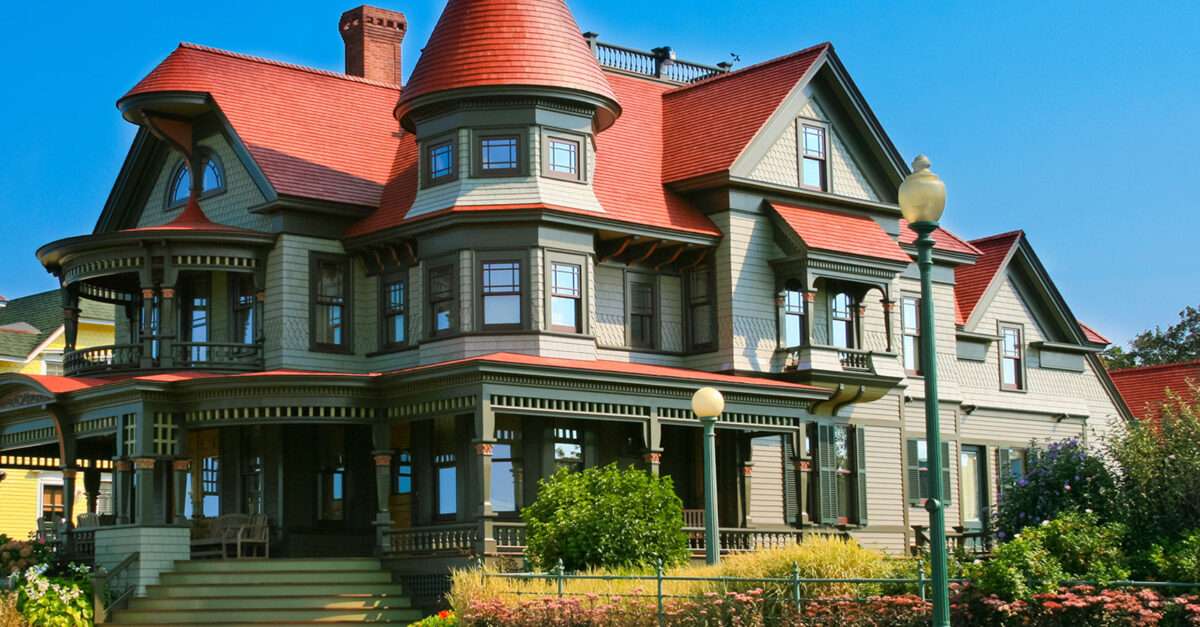Living in History

Lifestyle
Lifestyle There’s an intangible but special quality to every historic home, one that’s easy to glean simply through a glance.
You can imagine the craftsmanship and attention to detail that went into laying each brick and shingle, the countless memories made behind its walls, and the stories it would tell if only it could.
Owning such a home is quite different than admiring it from afar, however. Finding, purchasing, and keeping up with a house of this caliber requires patience and careful planning—but the rewards can be well worth it. If a new build doesn’t speak to you and you’re interested in an older home with a lot of character and significance, this guide explains what you need to know about your future purchase.

What is a historic home?
Before diving into the ins and outs of buying and maintaining one of these residences, it’s important to note which homes qualify for a historic distinction. The National Register of Historic Places defines a historic place as one that is associated with events that contributed to our history, is associated with historically significant people, embodies the distinct characteristics of a particular time period or construction method or is representative of the work of a master or distinguishable entity, or has yielded or may yield important information regarding history or prehistory.
A building may also be considered historic if it is located within a designated historic district, even if the home itself does not meet the above criteria. There are currently thousands of historic districts spread across the United States, with some of the most well-known examples being the Charleston Old and Historic District in South Carolina and the French Quarter in New Orleans.

Finding one to buy
The National Park Service maintains an online database of registered historic places, making it relatively easy to browse them. It does contain every single listed building, though, including nonresidential ones, so looking here could muddle your search. A better bet is visiting the National Trust for Historic Preservation’s website, which offers its own digital record in partnership with CIRCA Old Houses—a nationwide marketplace of historic homes for sale. This catalog allows you to search by state, minimum and maximum price, style, and acreage to narrow your hunt to only properties of interest to you.
As with any home purchase, once you’ve begun browsing through listings, it’s wise to consult the expertise of a real estate agent. They can assist you in establishing a budget, locating options within your price limit and specifications, and even navigating local laws concerning the ownership of this property type.

Upkeep concerns
Given that historic homes are private property, owners are not required by federal law to maintain them, whether they’re listed on the national register or located within a historic district. However, states and localities can also designate places as historic, which may subject to them local ordinances that limit what changes owners can make to them. It’s important to familiarize yourself with these restrictions before buying so you can better know what you’re getting into.
You’ll also need to be prepared for a variety of different maintenance concerns. Not all houses will require a lot of work, but there’s a good chance you’ll have to invest more money into renovations than you would a typical home. A thorough inspection—preferably one conducted by an inspector familiar with historic homes—may help ensure that there are no skeletons, such as safety code violations, hiding in the home’s closets.
If you find that significant renovations are in order, here’s a bit of good news: thanks in part to the efforts of the National Trust for Historic Preservation, most states provide historic tax credits that can benefit homeowners during the preservation process. Some even offer grants specific to historic home renovations. These types of financial assistance usually come with stipulations, though, so be advised that you may only be able to use the funds for certain improvements. Your state historic preservation office should be able to help you with gaining access to these programs and understanding their terms.

Renovating is the reward
A major point of buying a historic home is to keep its history alive, which can make updating it a tricky balancing act. You can, however, preserve its rich past while bringing it into the twenty-first century by simply doing some research into the design trends of the era it was built during. For instance, highly desirable Victorian-era homes were all about maximalism—which happens to be in vogue once again. Incorporating wallpaper, stained glass, and deep colors could be appropriate options when renovating a home in this style.
Ultimately, it’s important to consider your personal tastes and how you may be able to blend them with the home’s original design. It may require a lot of time and energy, but imagine getting to walk through your home after restoring it to its former glory—what a gift that would be.
If you’re in the market for a new place and think a historic home might be right for you, reach out to a real estate agent, who can help you land a charming, time-honored space to make your own.
Lifestyle 25 Views
You may also like:
Discover more from Tamfis Nigeria Lmited
Subscribe to get the latest posts sent to your email.



 Hot Deals
Hot Deals Shopfinish
Shopfinish Shop
Shop Appliances
Appliances Babies & Kids
Babies & Kids Best Selling
Best Selling Books
Books Consumer Electronics
Consumer Electronics Furniture
Furniture Home & Kitchen
Home & Kitchen Jewelry
Jewelry Luxury & Beauty
Luxury & Beauty Shoes
Shoes Training & Certifications
Training & Certifications Wears & Clothings
Wears & Clothings
















